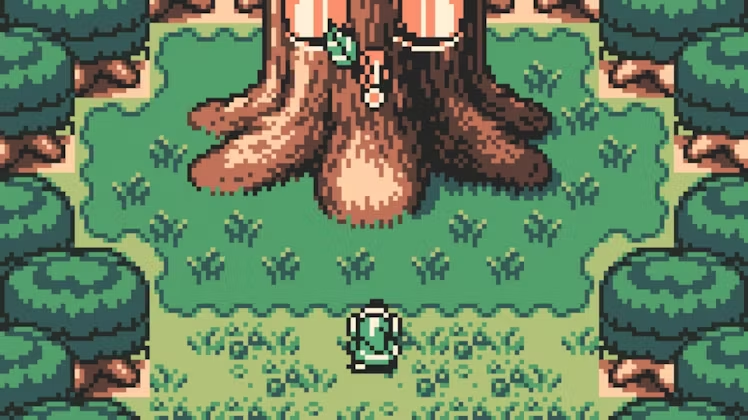The Legend of Zelda Retrospective – Part 4: Beyond the Triforce
- Spencer Lee Keung
- Jan 15, 2023
- 4 min read
The world of gaming has been significantly shaped by Nintendo, a company known for its innovative approach to game design and technology. Among its most iconic franchises is The Legend of Zelda, a series that has continually pushed the boundaries of interactive entertainment. This retrospective takes a closer look at the evolution of Zelda, particularly focusing on key releases that contributed to its legacy.
Revolutionizing Gameplay
Nintendo has long been at the forefront of gaming, pioneering numerous conventions that remain influential today. One of their defining strategies is the cross-platform integration of their properties, which can sometimes result in unexpected purchases. However, this approach often revitalizes classic gameplay formulas, presenting them in fresh, engaging ways.
After the success of two groundbreaking 3D Zelda titles for the Nintendo 64, Nintendo partnered with Capcom to expand the franchise just months before launching their next home console, the GameCube. During this time, they also introduced a vibrant new chapter for Link on the Game Boy Color. Under the guidance of Shigeru Miyamoto, The Legend of Zelda: Oracle of Ages and Oracle of Seasons were released simultaneously in May 2001.
The Triforce Trilogy Concept
Originally conceived as part of a trilogy called the Triforce Trilogy, these two handheld titles were intended to revamp the original NES games and introduce a new installment. As development progressed, this idea transformed into a project where each game would represent a third of the Triforce. However, creating a cohesive narrative using a new password system proved challenging. As a result, the project was simplified to two standalone games, each capable of linking progress through passwords.
From a gameplay perspective, Oracle of Ages and Oracle of Seasons split the classic Zelda formula in two distinct directions. Oracle of Ages leaned heavily on puzzles and labyrinth exploration, appealing to players who enjoyed intellectual challenges. In contrast, Oracle of Seasons focused on action-oriented gameplay, catering to those who preferred combat and adventure with swords and bows. Although each game offered a unique experience, a complete Zelda adventure required both titles to unlock the true endings.
The Adventures Begin
Both Oracle games commenced with Link visiting the mystical Temple of the Triforce, where he was drawn into a portal leading to the worlds of Labrena and Holodrum. In these realms, he encountered the Oracles: Nehru, a singer, and Din, a dancer. However, chaos ensued when the dark forces of Onox and Veran kidnapped one of the Oracles, throwing the balance of their worlds into disarray.
To restore harmony, Link embarked on a quest to retrieve the eight Essences of Time in Labrena, where he could manipulate time itself—traveling back a century and changing the course of history. In Holodrum, Link wielded a magical wand to influence the seasons, allowing access to different areas. While players could choose their preferred game style or combine both for an extensive adventure, the Oracle titles stood as two of the franchise's lesser-played entries, despite retaining all the beloved elements that define Zelda.
Expanding the Universe
In the following year, Nintendo ported The Legend of Zelda: A Link to the Past to the Game Boy Advance, adding some cosmetic updates. Alongside this classic, they introduced a multiplayer Zelda experience titled Four Swords. Though it was initially perceived as a bonus feature, Four Swords proved to be a robust game in its own right. However, gathering three friends with Game Boy Advance systems and the necessary adapters to play together was often a challenge.
In 2004, Nintendo took a significant step by releasing Four Swords Adventures for the GameCube. This iteration allowed a single player to control all four Links by arranging them into various formations. Unlike previous Zelda titles, this game adopted a more linear approach, emphasizing cooperative gameplay rather than an expansive overworld. Similar to the Oracle games, Four Swords Adventures was designed to transfer data between consoles using a GameCube to Game Boy Advance cable. While solo players could navigate the adventure using just a GameCube controller, additional players required their own handheld devices, switching perspectives between the TV and the GBA.
The game also featured the return of Dark Link, a doppelganger that players had encountered in earlier Zelda titles, such as Zelda II: The Adventure of Link and Ocarina of Time. With charming animations and intriguing puzzles, Four Swords Adventures marked a return to the top-down perspective and aesthetic reminiscent of A Link to the Past.
Legacy and Innovation
Although these games may not have achieved the same commercial success as their golden predecessors, they showcased Nintendo’s eagerness to innovate and explore new gameplay mechanics. The spirit of experimentation has kept The Legend of Zelda series dynamic and relevant across generations.
Conclusion
As we conclude this chapter of Zelda’s journey, we eagerly anticipate Link's return to consoles in a surprising new direction with The Legend of Zelda: The Wind Waker and the display of his handheld prowess in The Minish Cap. The ongoing evolution of this beloved franchise continues to inspire both players and developers alike, ensuring its place in gaming history.






.png)











Comments